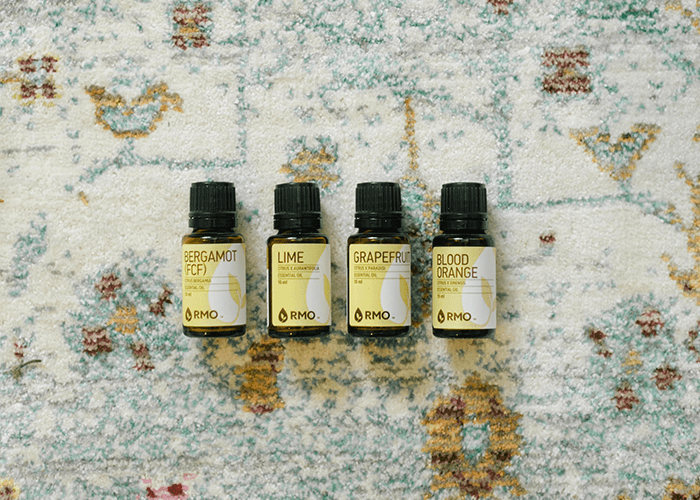All About Photosensitive Essential Oils
Phototoxicity, Photosensitivity, Photoirritation...Oh My!
You may have heard the term “photosensitivity” when learning about citrus or cold-pressed essential oils. Photosensitivity, also known as photoirritation or phototoxicity, is a chemically induced skin irritation that can occur when you topically apply certain essential oils and expose your skin to UV light too soon. Some examples of the irritation you can experience are:
- Redness
- Burning
- Itching
- Blistering
- Skin discoloration
- Inflammation
That doesn’t sound too great, huh? Not to worry. Here, we will discuss which citrus or cold-pressed essential oils are photosensitive and which ones are not. We will also go over safety tips on how you can use photosensitive oils appropriately.
So, what makes an essential oil photosensitive?
Certain essential oils contain furocoumarins. Furocoumarins are naturally occurring organic chemical compounds produced by specific plants. These chemical compounds are a defense mechanism that the plant uses to ward off small animals or bugs in nature. Some of the most common furocoumarins are Oxypeucedanin and Bergapten, which are found in citrus, cold-pressed essential oils like Grapefruit, Lemon, Lime, and Bergamot. Below is a list of essential oils that are known to be photosensitive:
Photosensitive Citrus Essential Oils:
Don’t worry! Not all citrus essential oils are photosensitive! Fun Fact: The “FCF” in our Bergamot FCF Essential Oil means that it is furocoumarin free. Once the extraction process is complete, distilleries heat up the Bergamot essential oil to destroy the furocoumarins, which removes the phototoxins. This means that it is safe to apply topically and wear out in the sun. There are some more essential oils that are not photosensitive. See the list below:
Non-Photosensitive Citrus Essential Oils:
- Bergamot FCF (Citrus bergamia)
- Lime - steam distilled (Citrus x aurantifolia) (found in our Sweet Oasis Blend)
- Red Mandarin (Citrus nobilis)
- Orange, Sweet (Citrus sinensis)
- Tangerine (Citrus reticulata)
- Blood Orange (Citrus x sinensis)
Did you know? Our essential oil blend Sweet Oasis contains a steam-distilled Lime essential oil. This means that it is not photosensitive and perfect for topical application anytime!
Using Photosensitive Essential Oils
So, what should you do when you use a photosensitive oil topically? Simple! Avoid the sun, tanning beds, or any UV light for 12 - 18 hours after you apply the oil to exposed skin. What about all of those great skin care recipes that use oils like Lemon or Grapefruit? Not a problem! Just apply them in the evening before you go to bed. In the book Essential Oil Safety by Robert Tisserand and Rodney Young, they offer some great information in regards to using photosensitive oils: "There is generally no phototoxic risk if the oils are used in a product that is either not applied to the body or is washed off the skin, such as shampoo, bath preparation, or soap. However, essential oils can adhere to the skin if used in a sauna or steam inhalation. There is no risk if the skin to which the oils are applied is covered in such a way as to prevent UV rays from reaching them." [Robert Tisserand and Rodney Young, Essential Oil Safety (Second Edition. United Kingdom: Churchill Livingstone Elsevier, 2014), 88.] Photosensitive oils may be a little intimidating at first. However, with these tips and tricks, you don't have to worry about using your favorite citrus essential oils improperly. Instead, you can reap the benefits while keeping your skin safe.

